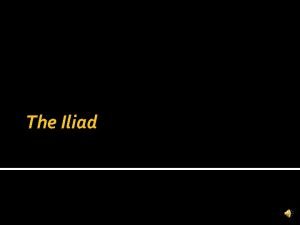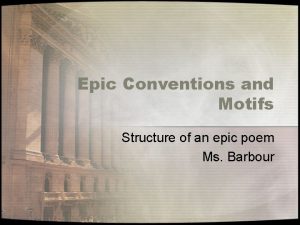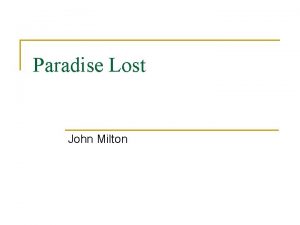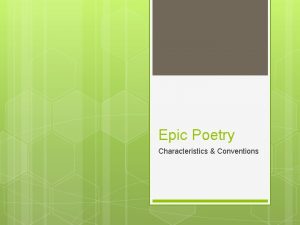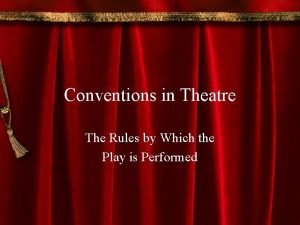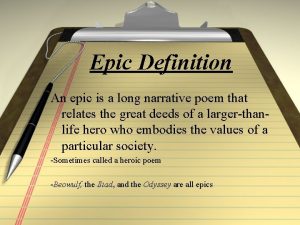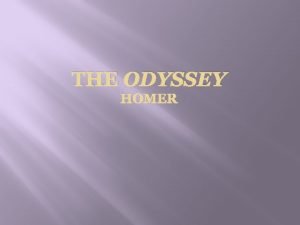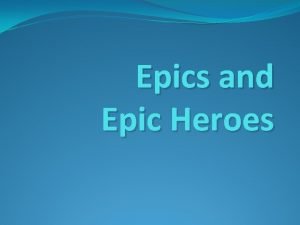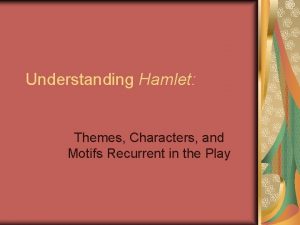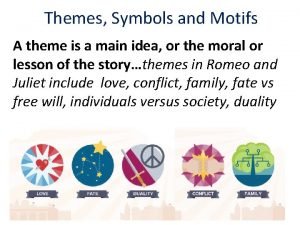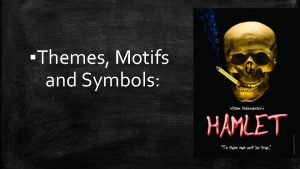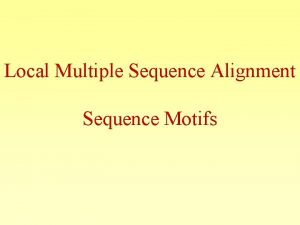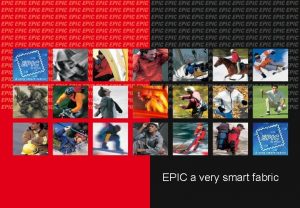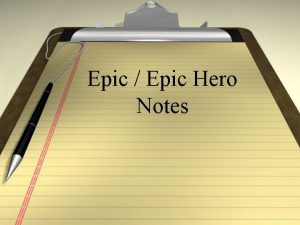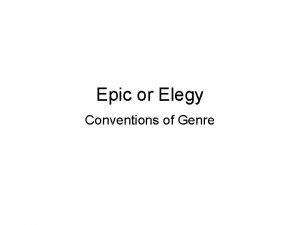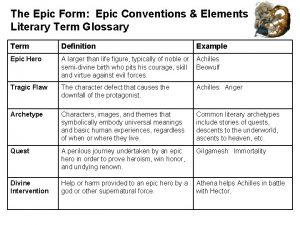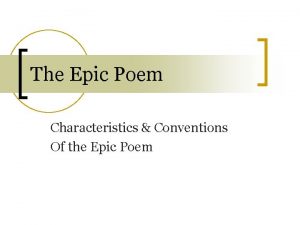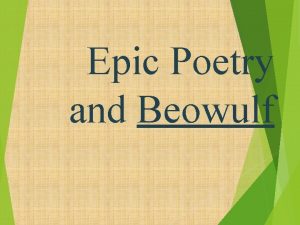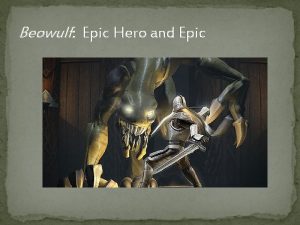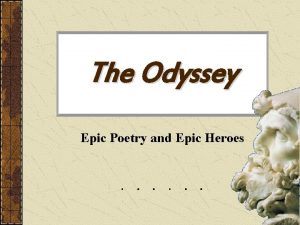Epic Conventions and Motifs Structure of an epic












- Slides: 12

Epic Conventions and Motifs Structure of an epic poem Ms. Barbour

Definition of an Epic • A very long poem composed in a lofty style that tells a story of a hero on a grand scale. • Examples: – Iliad – Odyssey – Beowulf – Paradise Lost – Divine Comedy

Characteristics of an Epic • Epic hero - protagonist, generally a noble hero of national significance, undergoes many adventures that help create a people or a nation • Grand scale - vast setting relates episodes of courage and valor that cover the expanse of continents or sometimes the entire universe

Characteristics of an Epic • Semi divine intervention - gods or demons often intervene in the action, either by helping or hindering the hero • Stated theme – comes early in poem • Invocation of the muse – poet asks for inspiration • “in medias res” – poet begins in middle of action

Characteristics of an Epic • Catalog – warriors, ships, and enemies make up large passages – presents different elements of culture in detail to create effect that epic is including whole world of its action in poem • Long speeches – characters have formal speeches in lofty, non-colloquial style

Characteristics of an Epic • Noble style – poet, whether known or not, relates tale in simple yet elevated language which underscores poem’s serious mood – poet uses set of common literary features (such as below) • Extended comparisons – epic similes – in Beowulf, the comparisons are called kennings

Characteristics of an Epic • Journey to underworld motif– hero goes into a dark and dangerous situation, such as land of dead or hell, in attempt to fulfill mission (part of Monomyth) • Recapitulation of events – in order to reinforce heroic character or downfalls • Council of leaders – to give advice to hero, whether he accepts it or not

Types of Epics • Folk – conglomeration of shorter tales that have been combined and unified by a skilled, though anonymous author – language is not always polished and structure maybe puzzling • Examples: – – – Iliad Odyssey Beowulf Mahabharata (Best of Bharata – his descendants) El Cid Song of Roland

Types of Epics • Literary – art epics – composed by known authors who have carefully imitated and modeled folk epics – follow conventions precisely usually set long ago and far away compelling reader to compare world of present with glories of past – often concerned about morality • Examples – – Virgil’s Aeneid Milton’s Paradise Lost Dante’s Divine Comedy Spencer’s The Faerie Queen

Types of Epics • Mock – not true epics – normally shorter than true epics – seek to satirize their subject instead of extolling them – treat trivial subject in lofty fashion to make it appear ridiculous • Examples – Pope’s Rape of the Lock – Byron’s Don Juan

Epic Hero • • • Noble birth or high position Aided by divine or supernatural forces Has spiritual helper Gives stirring speeches Super-human courage, intelligence, or strength Has journey or quest to conquer Has special weapon only he can wield His villains are super ugly, super evil, and super cunning Searches for father Performs great deeds When he dies, he is rewarded spiritually

Back
